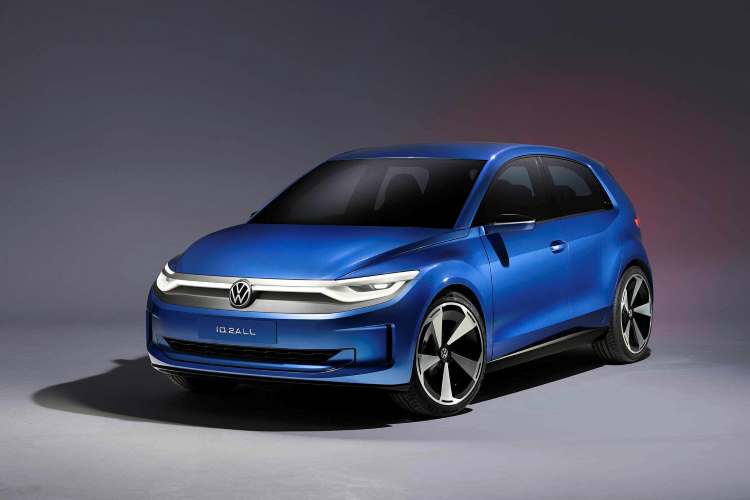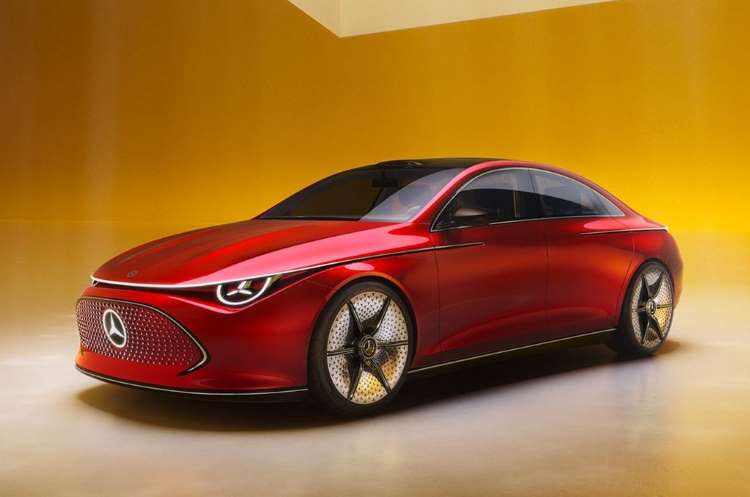
The future of European carmakers was on full display at the IAA Mobility motor show in Munich. BMW and Mercedes, the German automotive giants, had decided that now was the time to make their boldest moves into the electric vehicles (EV) market. The reason was clear: fierce competition from Chinese players and the relentless rise of Tesla in the electric car market. European car manufacturers, often perceived as lagging behind Chinese companies like BYD and Tesla, knew they had to act swiftly to prove their mettle in the electric era. The IAA Mobility show in Munich became the stage for their grand unveiling.
Mercedes-Benz took the lead, unveiling its Concept CLA Class, an electric vehicle built on a groundbreaking architecture designed to underpin their future battery-powered vehicles. The concept car boasted a remarkable range of 750 kilometres (466 miles) and could charge up to 400 kilometres within just 15 minutes.
Not to be outdone, BMW showcased its “Vision Neue Klasse,” another electric concept car that symbolised the company’s commitment to EVs. The Neue Klasse represented BMW’s new platform for electric vehicles, with the first cars set to roll off the production line in 2025. BMW CEO Oliver Zipse proudly announced their ambitious plan to double EV sales for the year and projected that by the end of 2023, 15% of BMW’s global sales would be battery EVs.
READ I GDP growth: Monsoon woes, inflation threaten India’s economic recovery

Europe mounts electric vehicles challenge
These dedicated EV platforms marked a significant departure from the past, where these automakers adapted combustion engine or hybrid models to accommodate batteries. It was a clear signal that they were entering a new era for electric vehicles. Analysts recognise the significance of these announcements, but cautioned that it might not be enough to catch up with Tesla. They say while these new platforms could close a large portion of the gap, it might not be sufficient to eclipse Tesla and the Chinese carmakers.
As Mercedes and BMW forged ahead with their electric vehicle strategies, a price war loomed large on the horizon. Tesla had ignited this battle by slashing prices in 2023, prioritising market share over short-term margins. Both Mercedes and BMW occupied the premium segment of the market, where they would face off against Tesla’s Model S and Model X. Mercedes, however, remained firm in its focus on value over volume.
Meanwhile, another German carmaker Volkswagen has a different strategy — it plans to release electric cars at various price points to capture different market segments. They announced the launch of eleven new all-electric models by 2027, emphasising their commitment to electrification. In 2026, it intends to introduce the ID. 2all concept, the electric car costing less than 25,000 euros.
In a world where EVs were becoming increasingly synonymous with technology, European carmakers recognise the importance of integrating cutting-edge technology into their vehicles. They look to emulate Tesla’s approach by creating cars that resembled smartphones more than traditional vehicles. For instance, BMW’s Vision Neue Klasse EV boasted a heads-up display that projected information onto the driver’s windshield, a nod to the growing importance of digital integration in the automotive industry.
However, the elephant in the room is the cost factor. European carmakers faced a daunting task: closing the cost gap with Chinese automakers, who had gained a head start in developing affordable EVs. They acknowledge this challenge, hinting that as manufacturing costs decreased, prices would also follow suit. Renault’s R5 EV, slated for release the following year, aimed to be 25% to 30% cheaper than their existing electric models.
Chinese EV makers, including BYD, Nio, and Xpeng, were aggressively targeting the European EV market, which had seen a remarkable 55% surge in sales in the first seven months of 2023, accounting for 13% of all car sales. European carmakers understood that they needed to act swiftly to compete with these innovative and cost-effective Chinese models.
The IAA Mobility show in Munich had become a battleground where European car manufacturers faced not only each other but also the formidable competition from Chinese and Tesla. The challenge was clear: to create EVs that were not only technologically advanced but also accessible to a wider range of consumers. As they unveiled their electric visions, the world watched closely to see if Europe could indeed close the gap and emerge as a dominant force in the electric vehicle revolution.
Anil Nair is Founder and Editor, Policy Circle.

